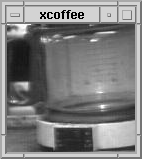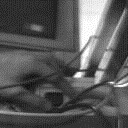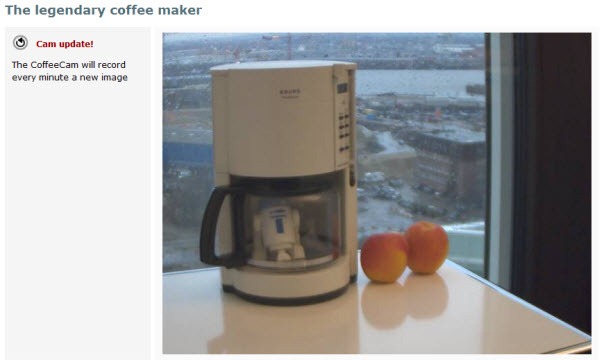The world’s first Internet webcam was invented not out of necessity but out of convenience.
In late 1991, about 15 or so researchers in the Systems Group at the University of Cambridge Computer Lab used to share a coffee machine located in the corridor outside the computer lab known as the Trojan Room. The coffee pot provided enough coffee to fill only a few mugs, and whenever a fresh pot was brewed, it emptied pretty quickly.
Some of the researchers worked in other parts of the building and had to navigate several flights of stairs to get to the coffee pot, often to find those closer at hand have beaten them to it. In the interests of fair play, some of the residents of the Trojan Room salvage a video camera, an old 680x0 VME-based computer, and a frame-grabber left over from other projects. They fixed the camera to a retort stand, pointed it at the coffee machine in the corridor, and ran the wires under the floor to the frame-grabber in the Trojan Room.

The coffee pot, as displayed in XCoffee
A server program was quickly written to capture 128×128 grayscale images of the pot every few seconds at various resolutions. A client program enabled others to keep watch on the state of the coffee pot from their machines.
When web browsers gained the ability to display images in March 1993, it was clear this would be an easier way to make the picture available. The camera was connected to the Internet in November 1993 and became available not only to the researchers at the University of Cambridge but to any Internet user. The Trojan Room coffee pot grew into a popular landmark of the early web.

The last picture the webcam ever took, showing the server being switched off
On August 22, 2001, the camera was switched off when the computer department moved to their new premises. The pot, a German Krups model, was auctioned on eBay for £3,350 to the German website Spiegel Online.
After being refurbished by the employees of Krups free of charge, the pot has been switched on again in the editorial office of Spiegel Online in Hamburg's HafenCity to be admired from anywhere in the world. Once again you can watch the live cam of the coffee pot.

The Trojan Room coffee pot today at Spiegel Online’s office on the 13th floor, overlooking the river Elbe.
Related: What was the first image to be published on the Web?

Comments
Post a Comment